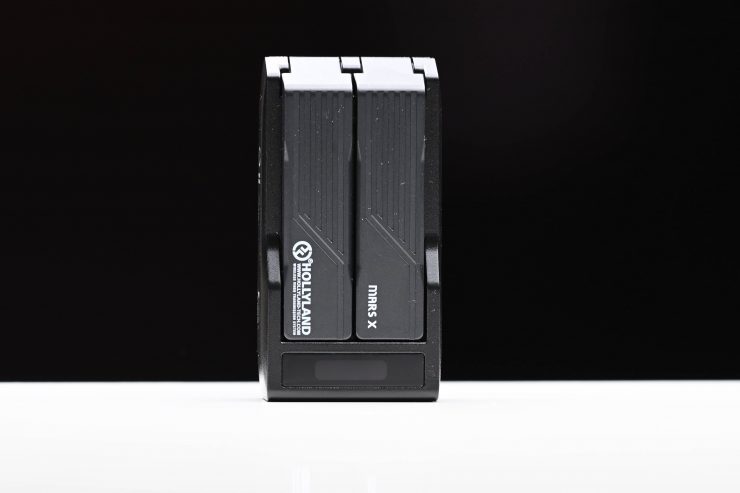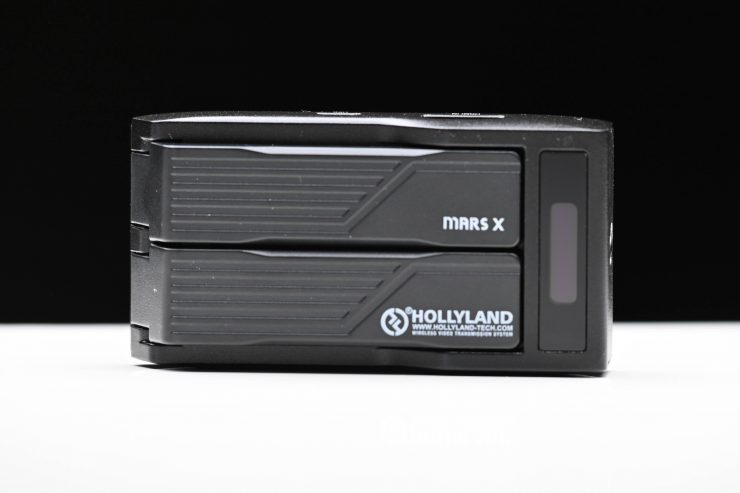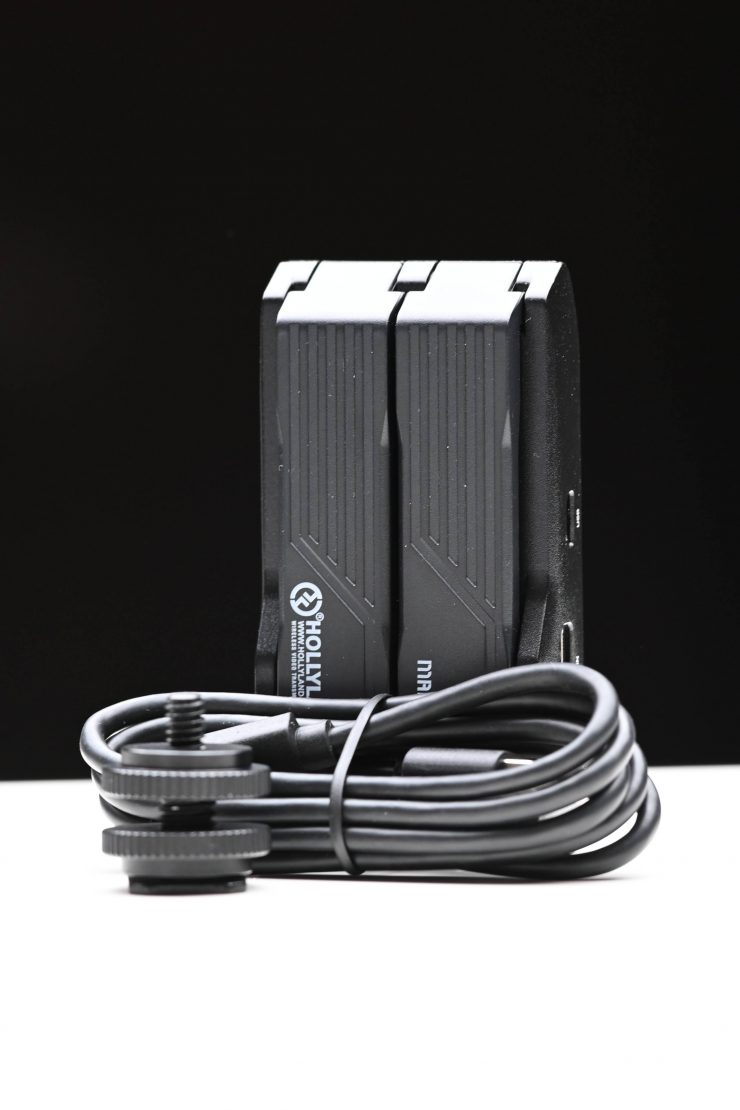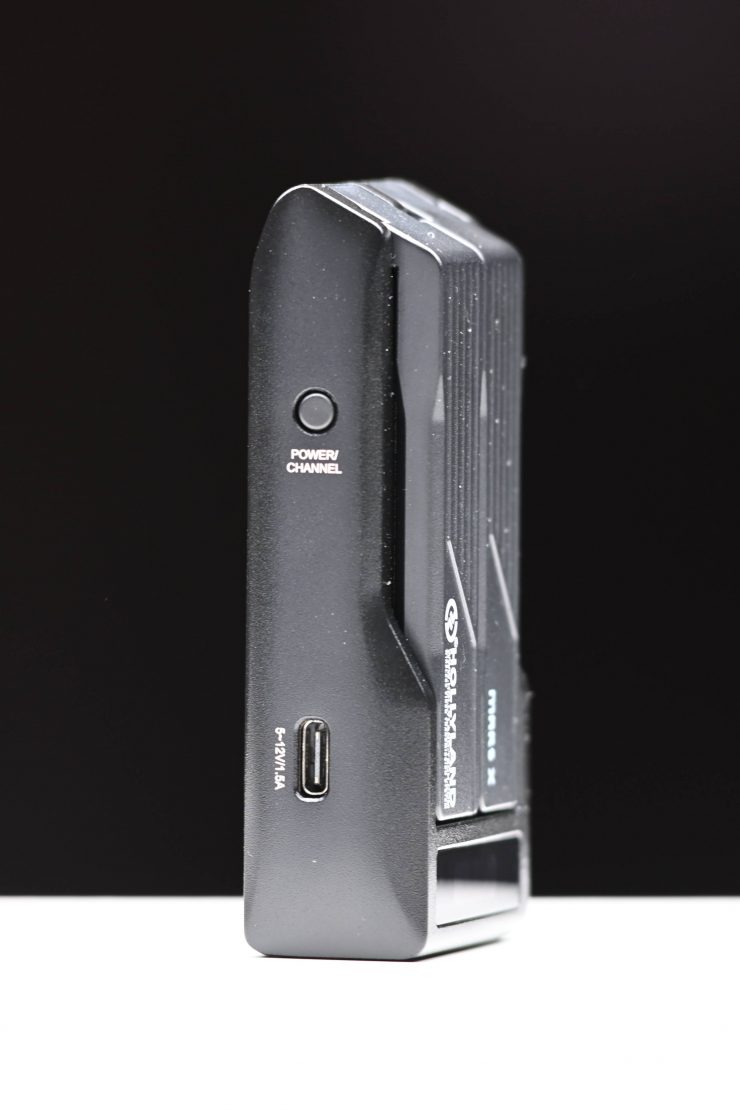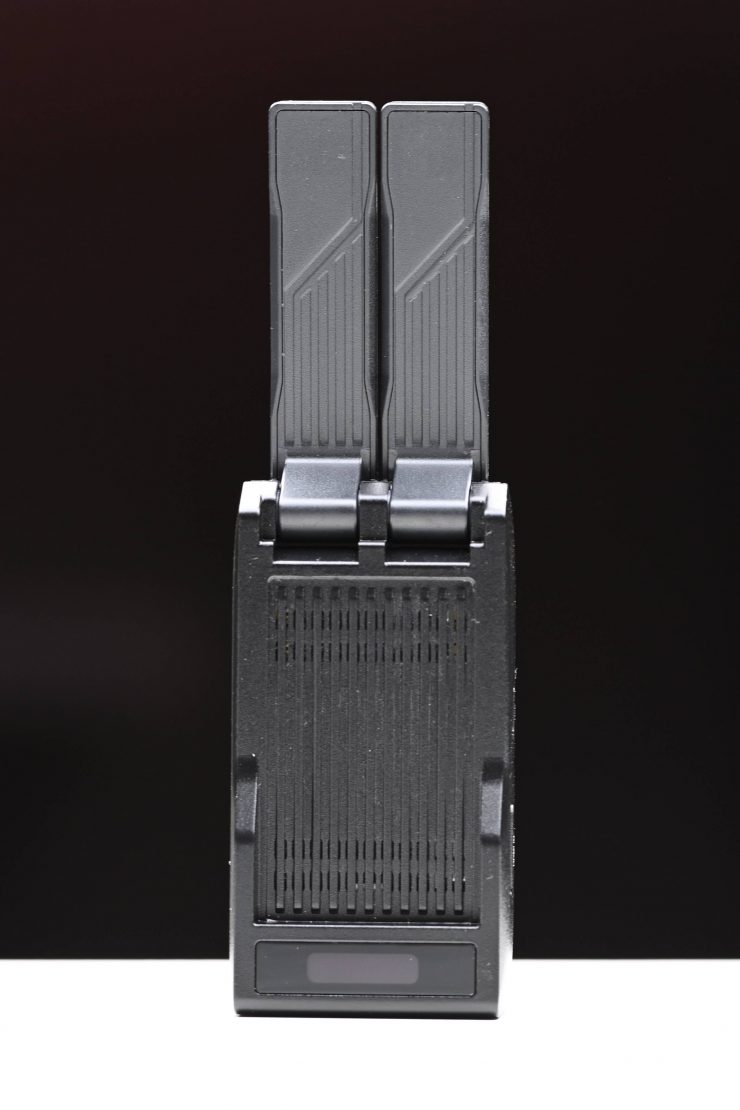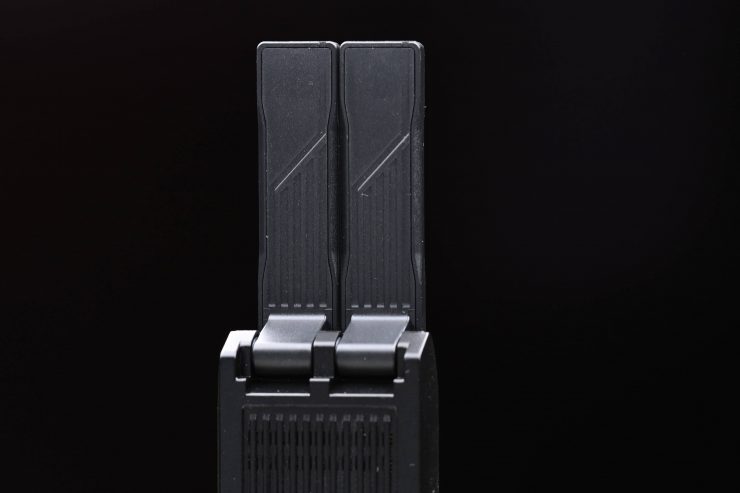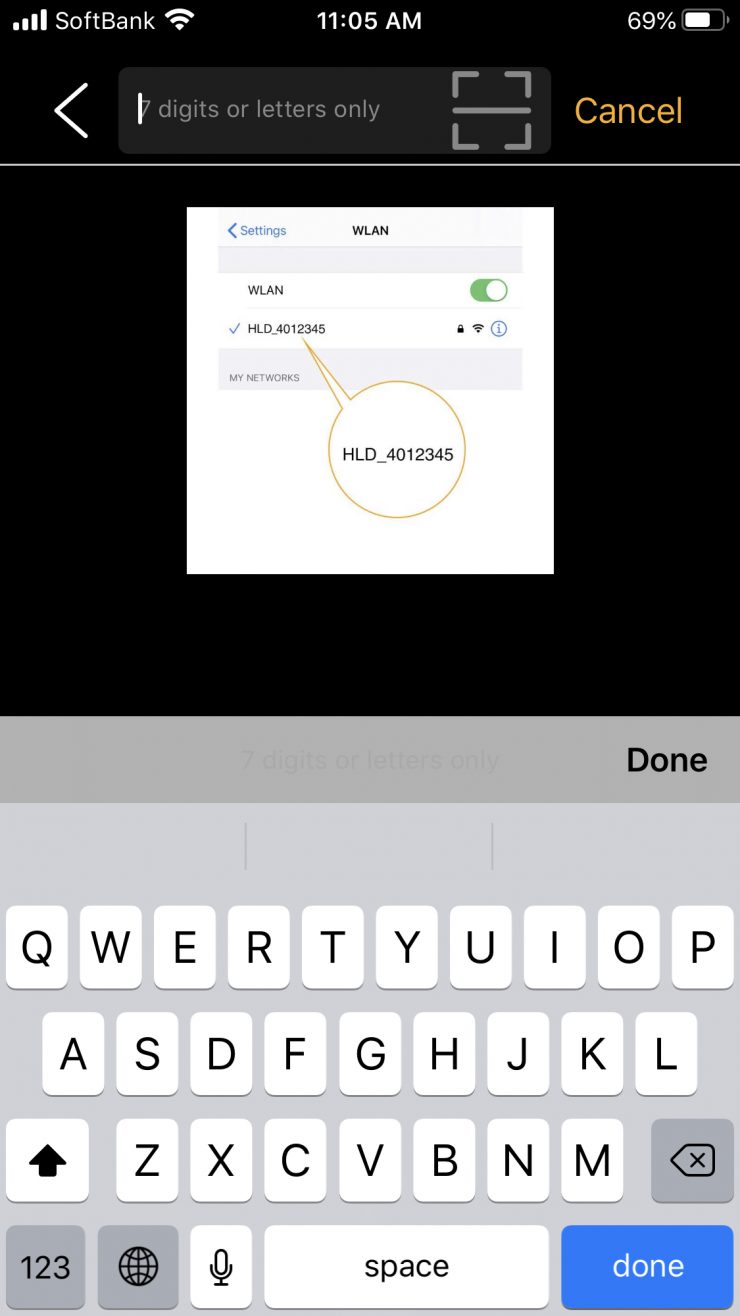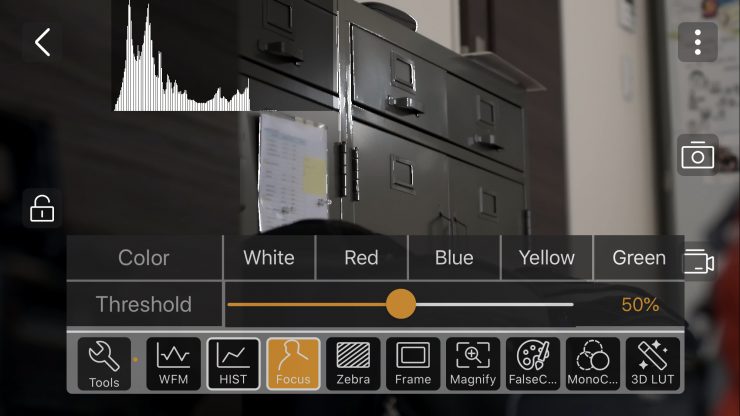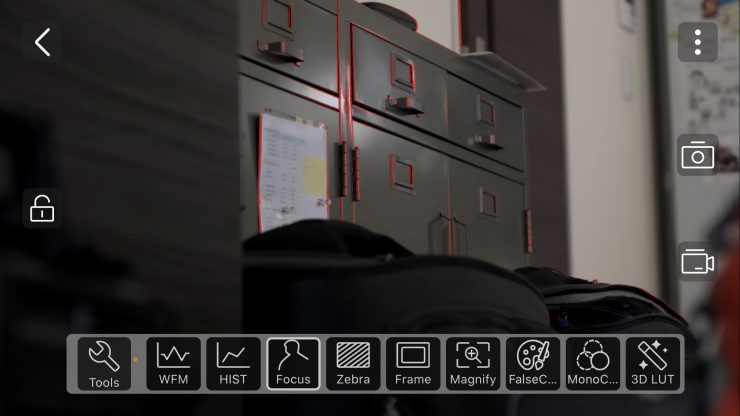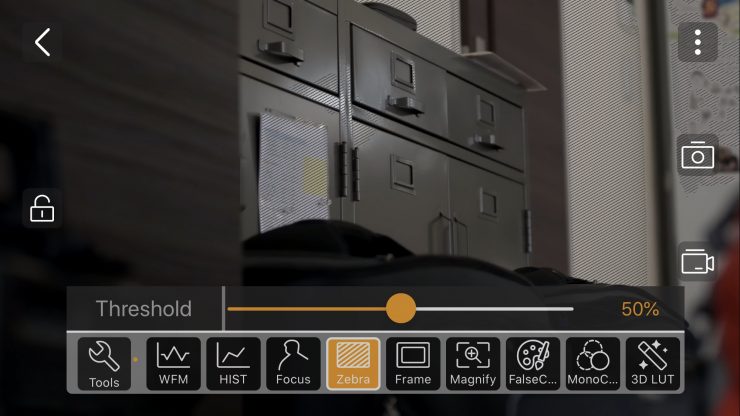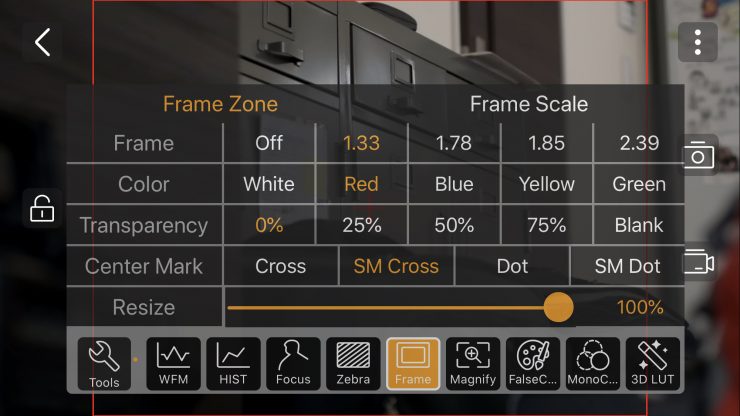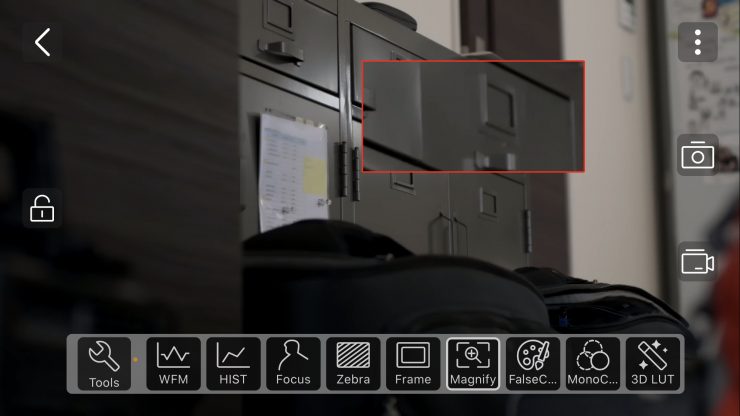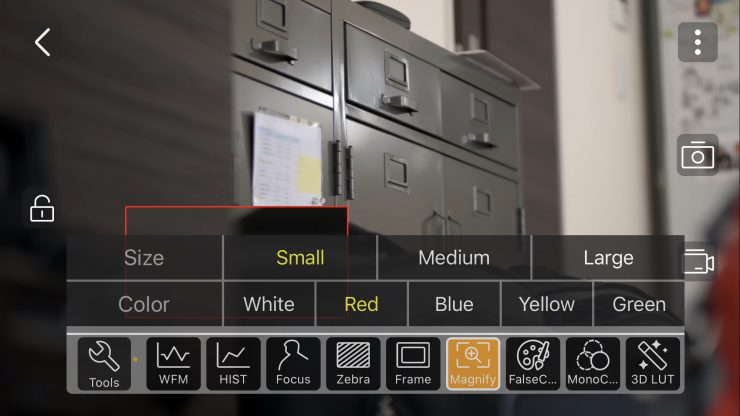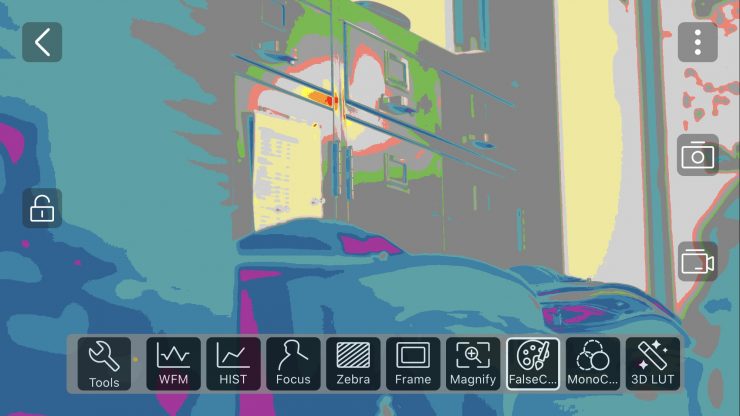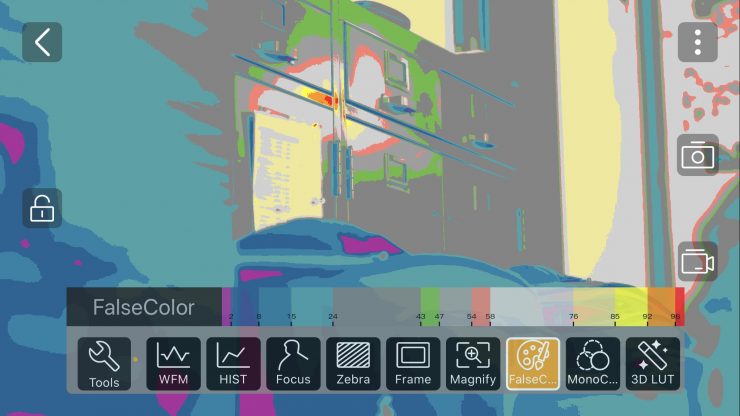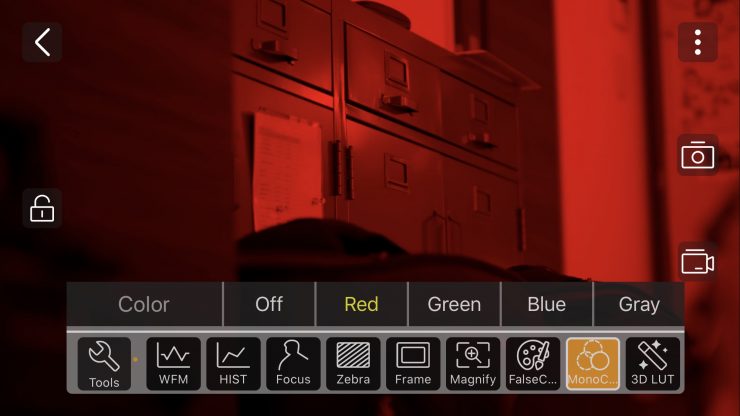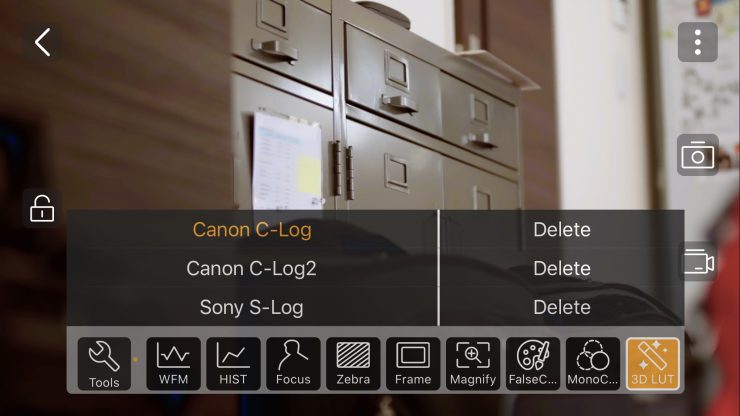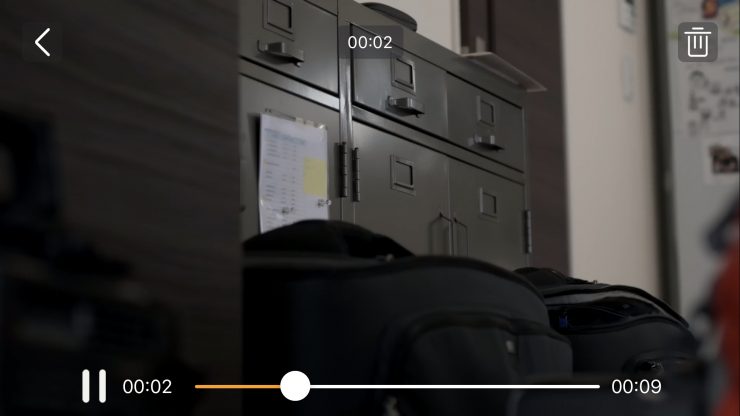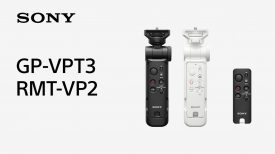
The Hollyland Mars X is a new addition to the companies Mars range of wireless video transmission systems.
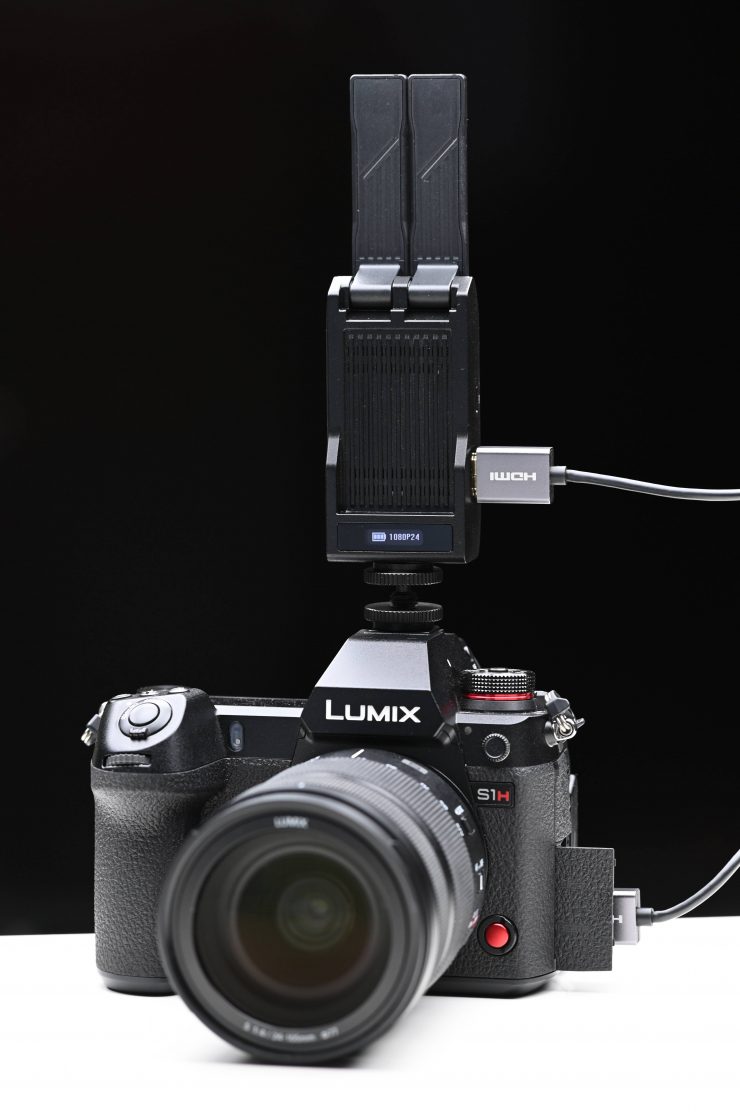
The Mars X is designed to be a more cost-effective entry-level wireless video system than the companies Mars 400 and Mars 400S
KEY FEATURES
- Transmit up to a 1080p60 HDMI signal 328′ to three iOS/Android devices with only 70ms latency
- Audio/video synchronization
- Built-in 1-hour 1300 mAh battery, rechargeable via a USB Type-C port with support for 5-12V wide voltage charging
- Built-in foldable antennas
- Rounded aluminum corners
- OLED display
- Eight frequency channels
- Channel scan feature for finding a channel with the least interference
- Companion iOS/Android HollyView app with monitoring features such as zebra, waveform, and false color
- 1/4″-20 mounting thread on the bottom and on the rear
Concept
The whole concept behind the Mars X is to provide an affordable, easy to use wireless monitoring solution that doesn’t require an RX unit or a monitor.
Unlike the existing Mars range, the Mars X is just an HDMI video transmitter that is designed to be used with iOS and Android devices.
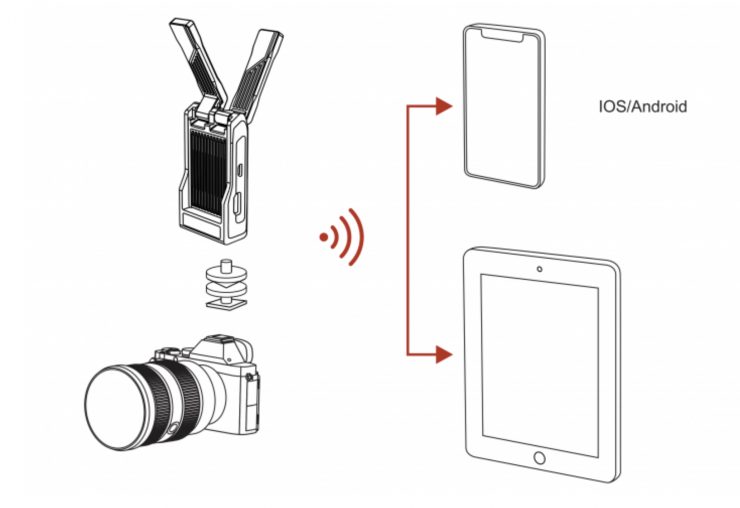
It allows you to use up to three iOS or Android devices simultaneously to monitor images coming from any camera that can output a signal over HDMI.
Being able to view an image on a tablet or smartphone is a great alternative to using a TX and RX unit and an additional monitor. It is a very quick, affordable, and easy way to give a client, a producer or director, gaffer, or even a hair and makeup person a way of viewing what the camera is capturing.
Whenever I do corporate shoots I tend to use the Teradek Serv Pro (as my primary camera doesn’t have HDMI out). That way multiple people can see what you are doing on their own devices. There is a certain level of comfort and familiarity that a client has with being able to view images on a tablet or phone.
Sending a wireless video signal that multiple people can view at once on a dedicated app is hardly new. Teradek has been doing this for years, and most recently we have seen very cost-effective systems from companies such as Vaxis and Zhiyun.
Build Quality
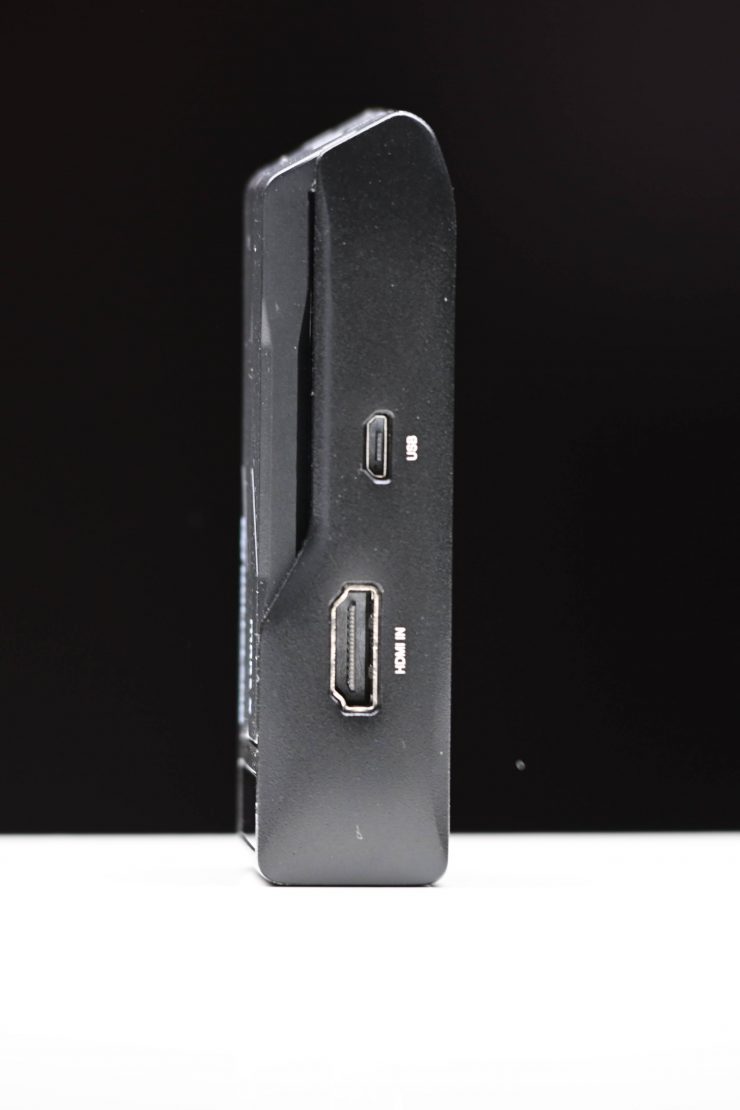
For an affordable wireless TX unit, the Mars X is reasonably well made, especially for a product that comes in at under $200 USD.
It isn’t made out of plastic. Instead, the casing is made out of aluminum.
I don’t have any concerns about the build quality and I think Hollyland has done a good job on the Mars X.
Size & Weight
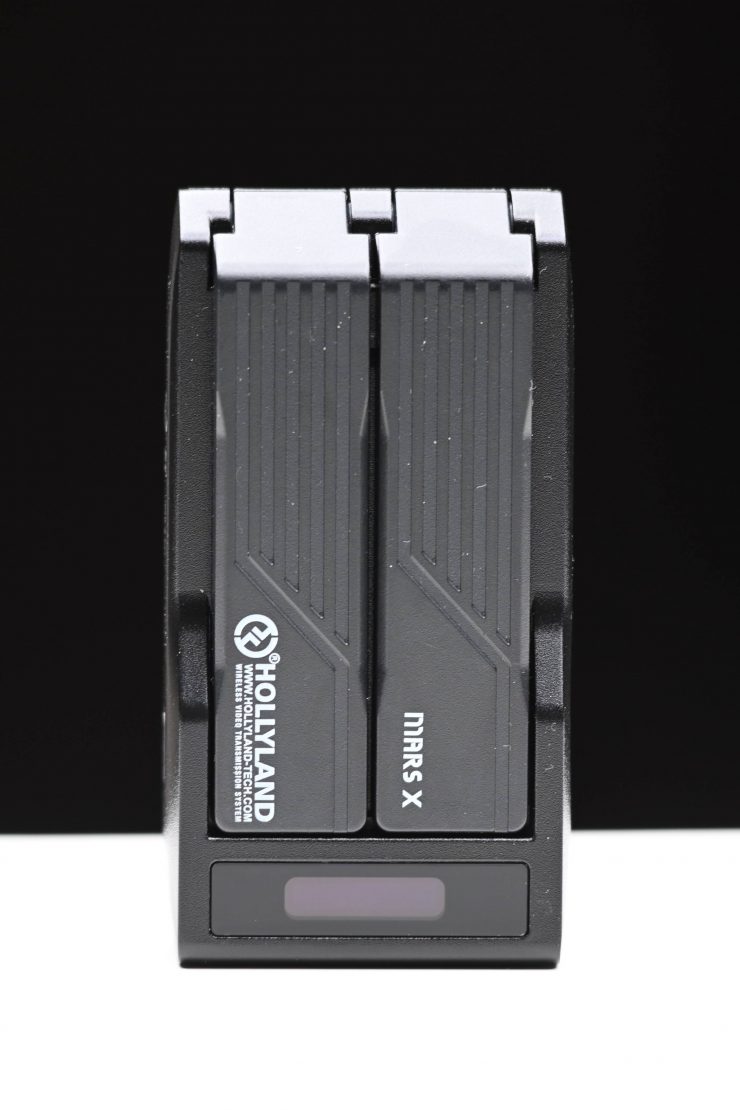
The Mars X weighs in at 112 g (3.95 oz). It has physical dimensions of 1.97 x 1.97 x 0.71″ / 5 x 5 x 1.8 cm with the antennas folded in.
This small size and weight does mean it is well suited to be used on smaller mirrorless and DSLR cameras.
What do you get?
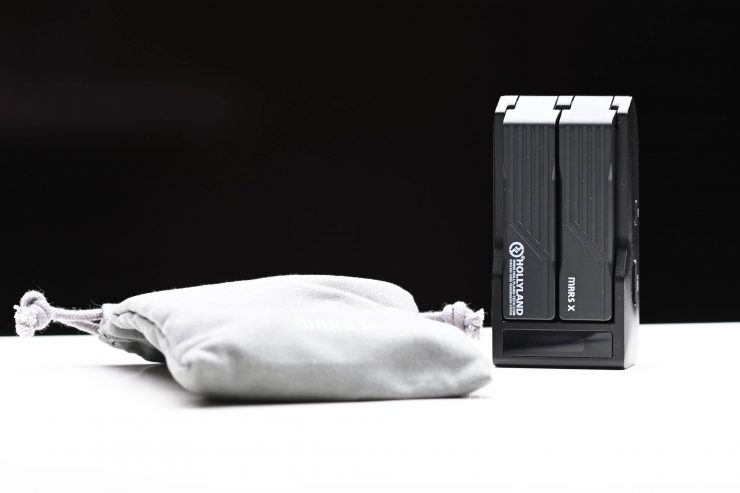
This is what comes in the box:
- Hollyland Mars X 1080p HDMI Wireless Video Transmitter
- USB Type-C to Type-A Cable
- Shoe Mount to 1/4″-20 Adapter
- Storage Bag
- Limited 1-Year Warranty
Interface & Transmission
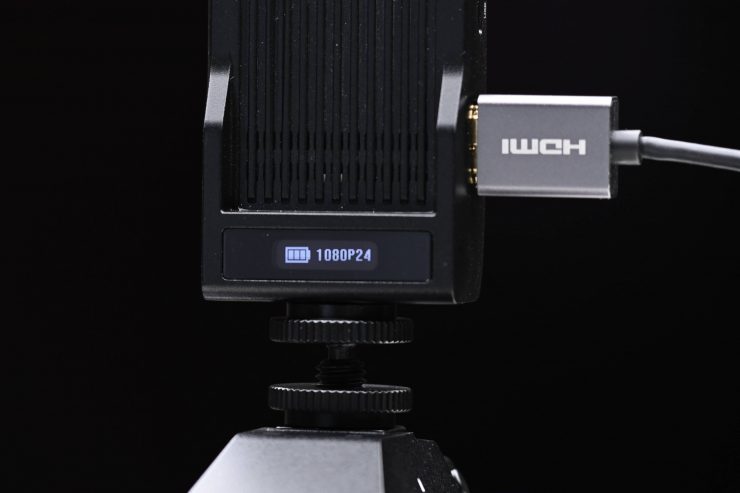
The Mars X is pretty basic. It has a very small OLED screen and there is just a single button for powering on/off the TX. That same button allows you to change channels.
The OLED display screen shows the battery status, frequency channel, video format, and Wi-Fi password.
Built-In Antennas
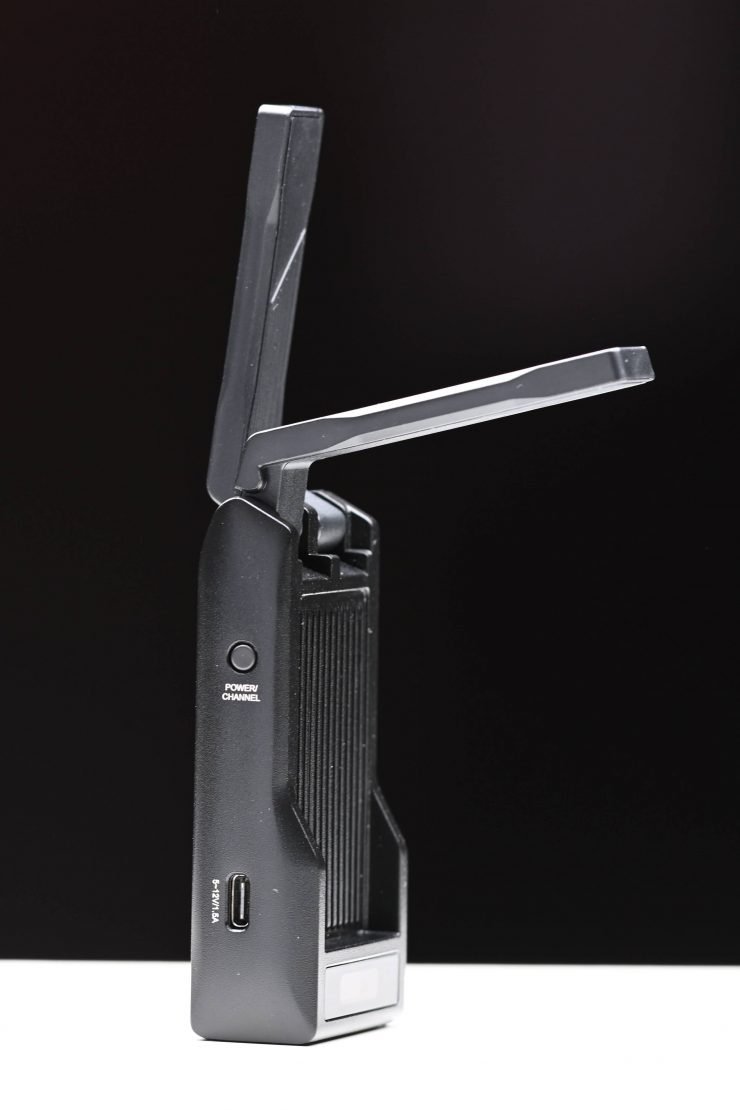
The Mars X has two foldable antennas. These two antennas move independently of each other and when the unit isn’t in use you can fold the antennas back into the body of the Mars X.
This is a nice design and it ensures that you can keep the antennas safe and keep the unit’s footprint to a minimum when you are not using it.
Mounting Points
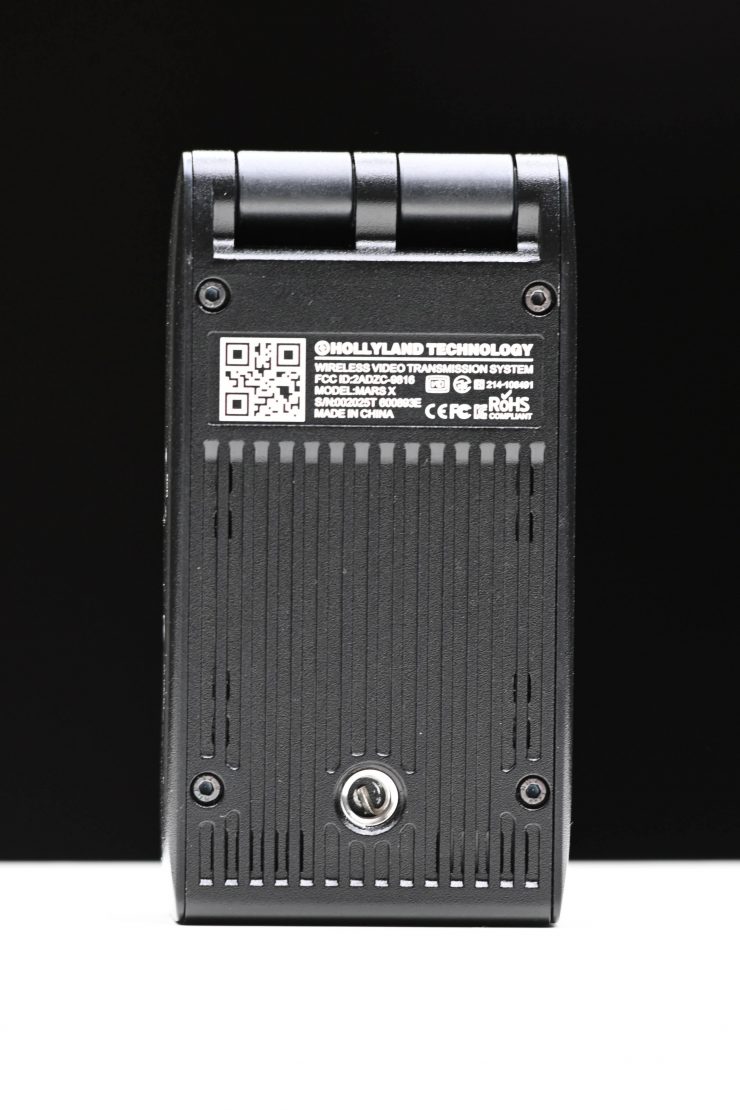
Hollyland has included multiple 1/4 20″ mounting holes on the Mars X. One is on the back and one is on the bottom.
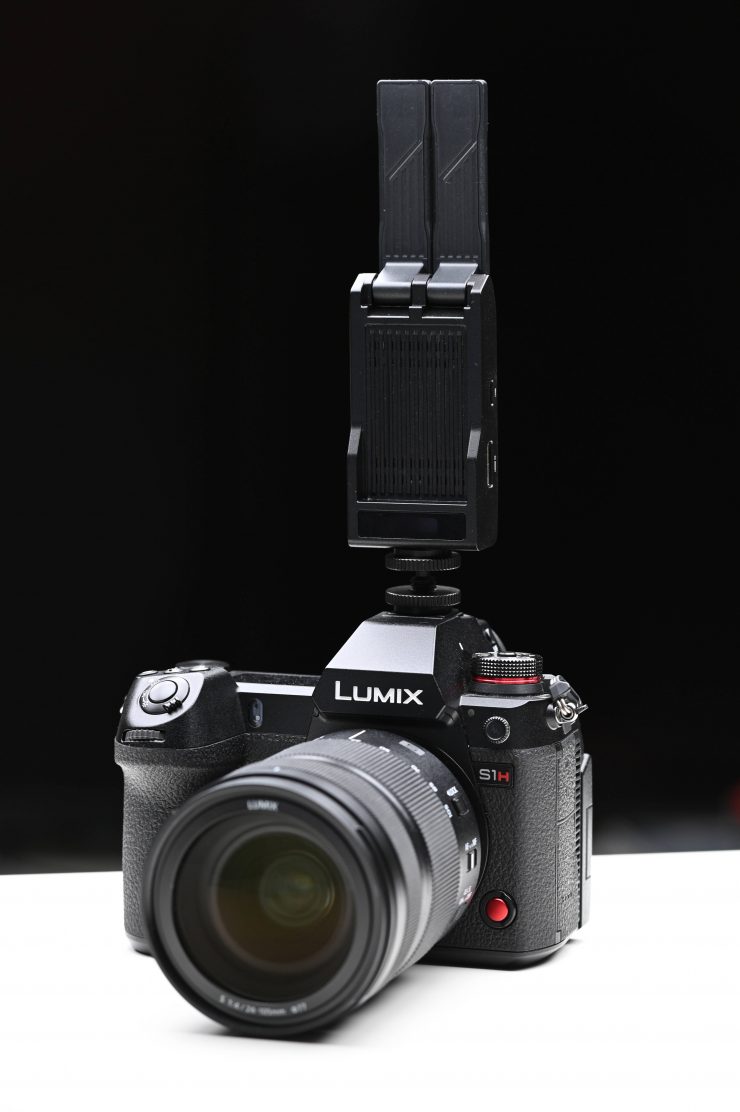
Hollyland includes a Cold Shoe Mount to 1/4″-20 Adapter in the box. This is how most people will probably mount the Mars X, especially those using mirrorless or DSLR cameras.
Can you use it for web streaming?
No. The Hollyland app does not support video streaming.
How does it work?
All you need to do is to connect to the Mars X Wi-Fi on your tablet or phone and then enter a password. You then open up the HollyView App and that is where you can monitor the images coming from your camera.
There is a range of monitoring tools in the app. These include:
- Waveform
- Focus peaking
- Focus magnification
- Zebras
- False color
- Mono color display
- 3D Luts
- Screenshot
More on how all of this works and performs further down in the review.
Power
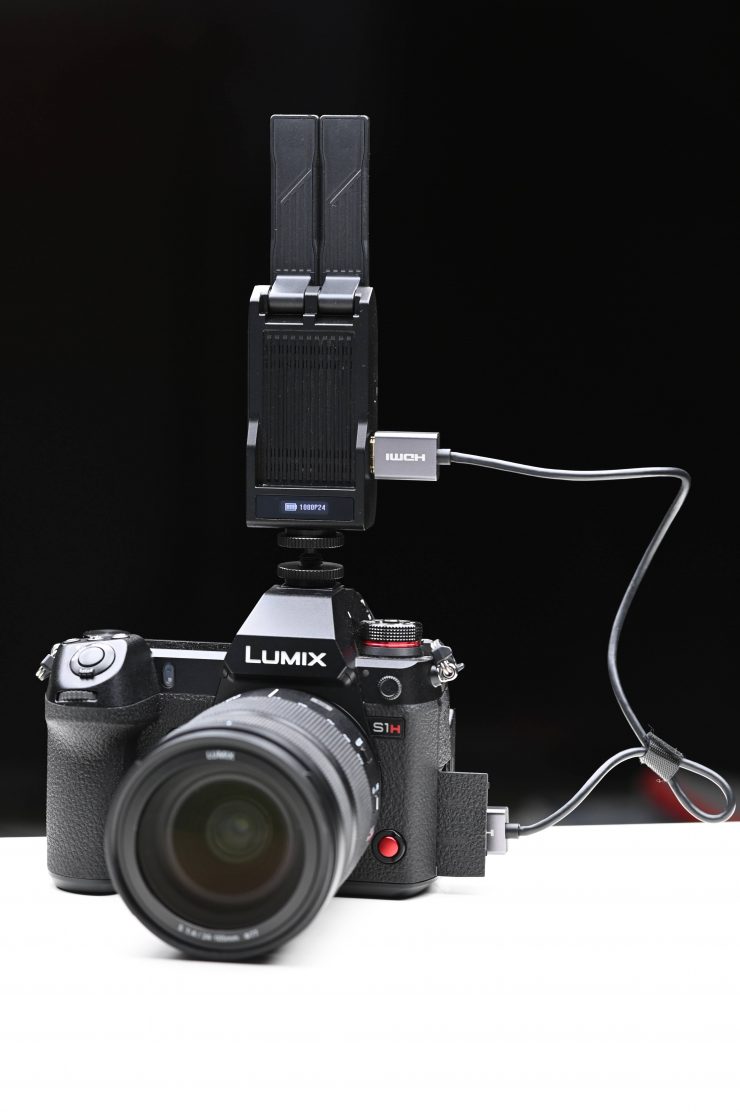
The Mars X features a built-in 1-hour 1300 mAh battery, rechargeable via a USB Type-C port with support for 5-12V wide voltage charging.
The battery takes around approximately 2.5 hours to be charged through the USB Type-C port.
For me, the Achilles Heel of this product is the run time from the in-built battery. An in-built battery last only lasts for 1 hour is almost pointless. Realistically to use this product you need to have it hooked up to an external USB power source. To me, this defeats the purpose of having a small, compact-sized wireless TX.
I would have preferred the Mars X to have a built-in battery plate.
Runs Quiet
The Mars X doesn’t use any type of fan so it does run completely silent. The problem I did find was that it did overheat if you were using it out in the hot sun for extended periods of time.
Who is it aimed at?
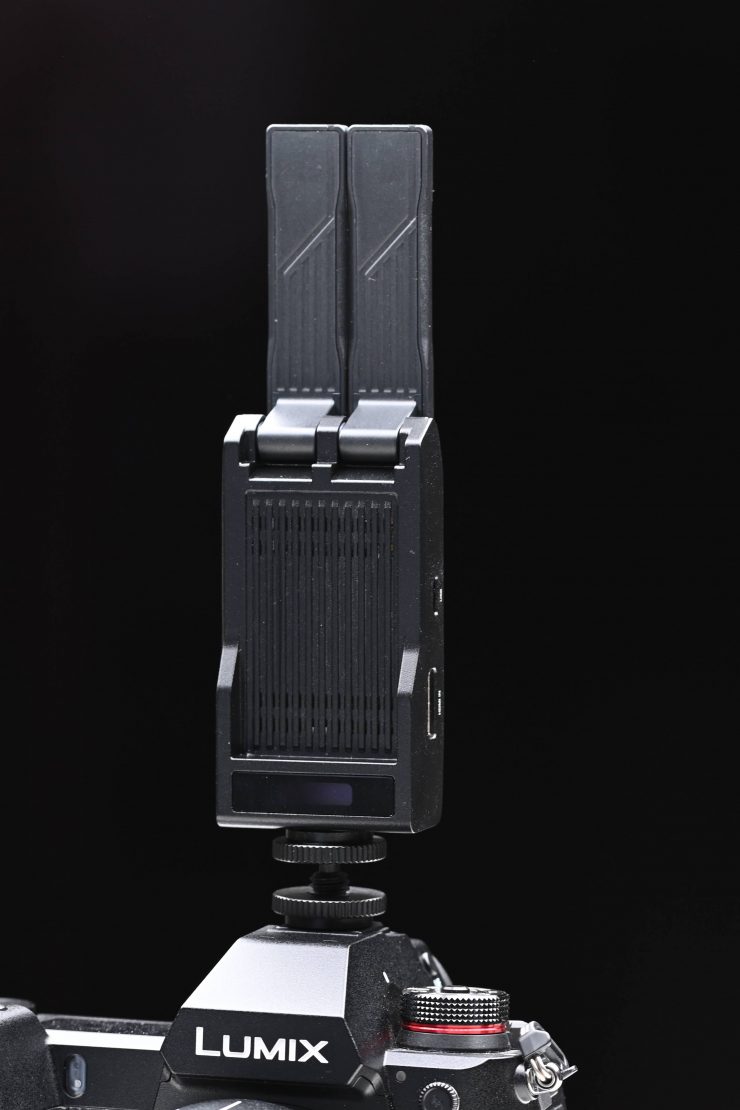
Wireless video transmission systems are a crucial part of many professional productions. They let everyone from the director, to the producer, the focus puller, the gaffer, and even hair and makeup see what is going on.
The Mars X isn’t being targeted for this type of use. It is being targeted at the lower end of the market where someone would like to be able to transmit wireless video over short distances and be able to view that material on a readily available smartphone or tablet.
What can you transmit?
The Mars X can transmit the following:
- 1080p at 23.98, 24, 25, 29.97, 30, 59.94, 60 fps
- 720p at 50, 59.94, 60 fps
- 576p at 50 fps
- 480p at 60 fps
You can be shooting in HD up to 60p, and depending on your camera, it should still be able to send a picture through the TX unit. I tried feeding 23.98, 24, 25,30, and 60p sources into the TX unit and they all worked.
Interlaced format input signals, such as 1080i, are not supported. Also, Hollyland has confirmed that the following cameras are not compatible with the Mars X: Canon 6D, 60D, 5D Mark II, 80D, and 90D.
Input Only
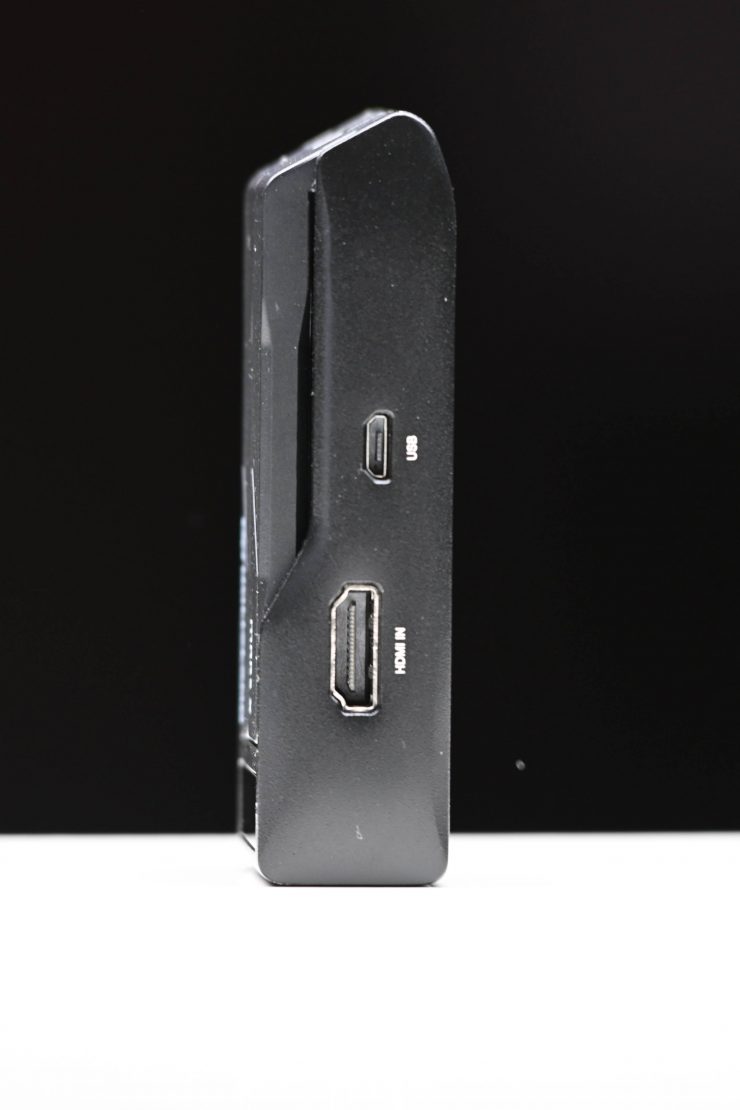
The Atom X features a single full-sized HDMI input. There is no output. If you need a wireless TX unit with an output this isn’t the device for you.
Encryption?
You can set a wi-fi password, but from what I understand there is no additional encryption being used on the Mars X.
I don’t personally see this as an issue, because people using a $180 USD wireless system are probably not going to be doing projects where the security of the signal needs to be protected.
Setup & Ease Of Use
A good wireless video solution, regardless of its price, should be easy and fast to set up and get running. In all honesty, this shouldn’t be a difficult task, and if it is, then the product has already failed in my opinion.
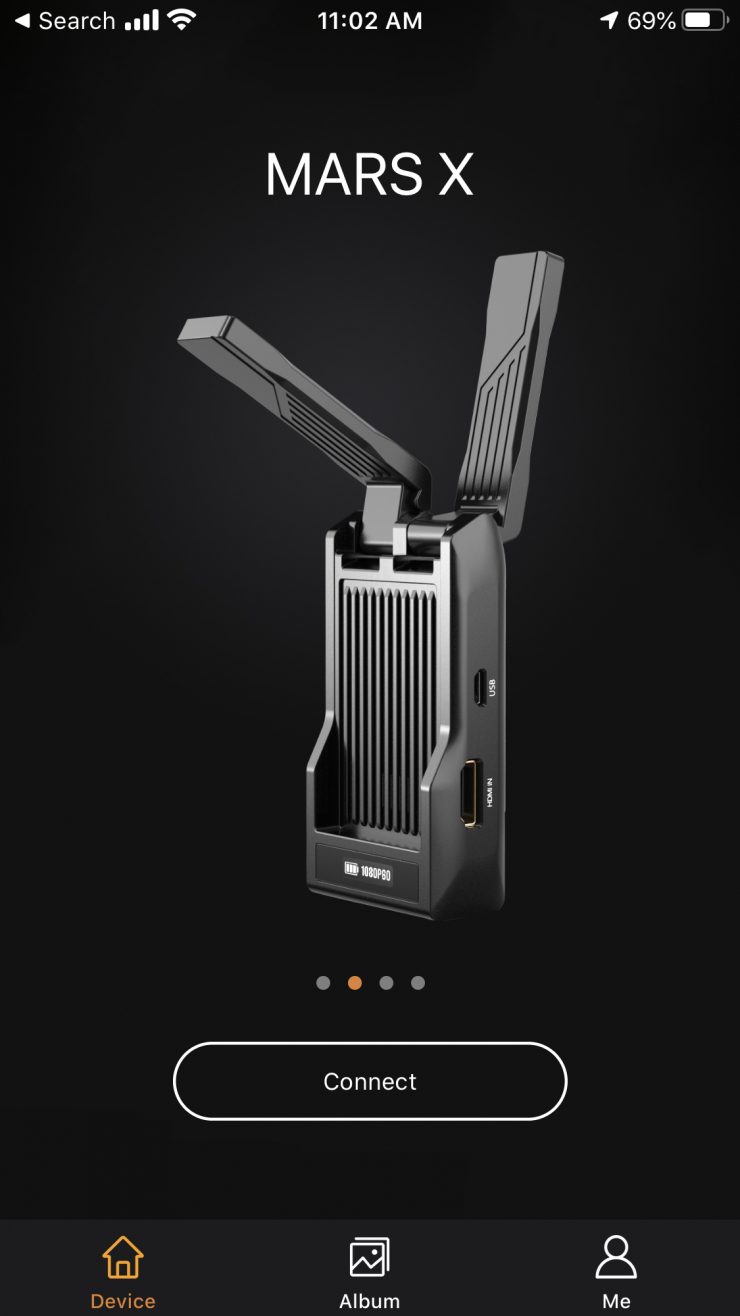
Once you power up the TX unit, and attach a video source, you then open the app and connect your tablet or smartphone to the wi-fi network that is generated by the Mars X. You can press the On/Off/Channel button twice on the Mars X to see the wi-fi password.
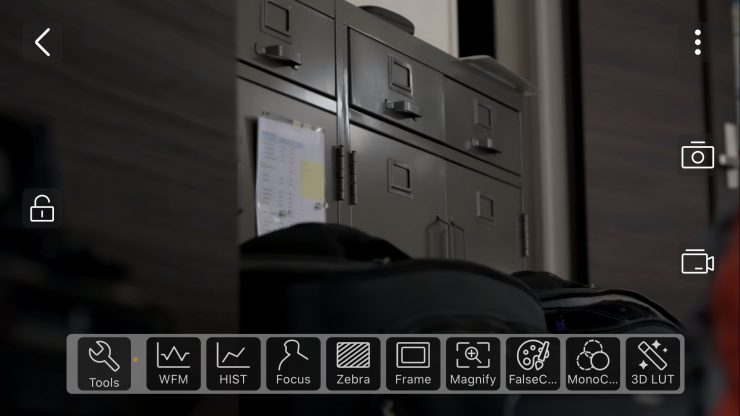
The mars X is very quick and easy to use. Once you hit connect you are automatically greeted by a screen showing the image from your video source.
Now, you don’t have to enter the password every time, it only has to be done if you are connecting up a device for the first time.
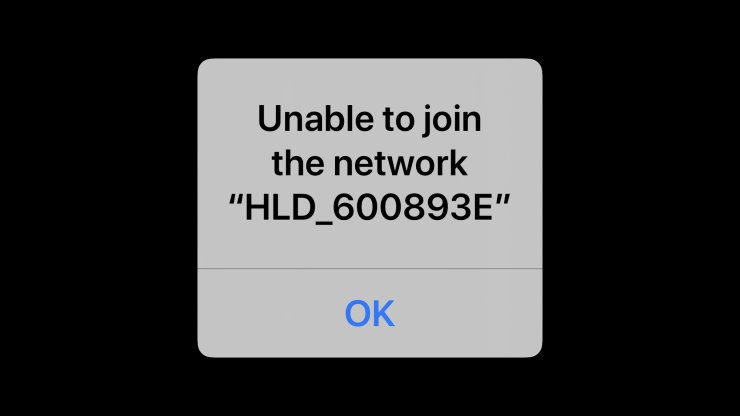
Getting back to the ease of use, I wanted to see what would happen if I lost connection, so I turned the Mars X off and then back on again. The problem I encountered is as soon as you turn the Mars X off the picture freezes up. The image just doesn’t come back. What I had to do was go out of the app and then hit reconnect. It then connected back up almost instantly.
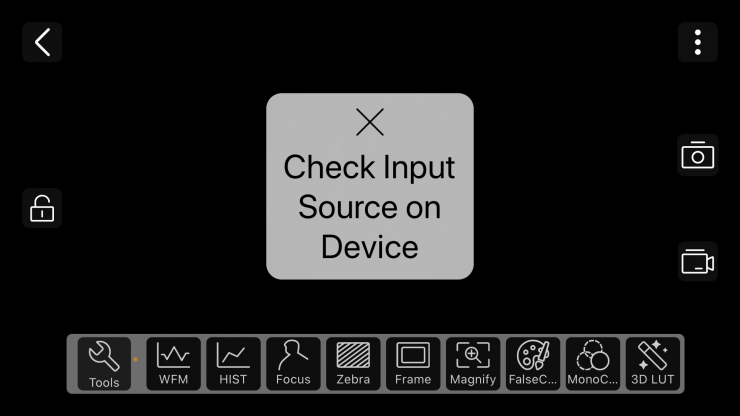
So what about if I pulled out the HDMI from the camera? Firstly you get a warning on the screen. Then once I plugged the HDMI cable back in the system re-established connection in under 2 seconds.
What if I suddenly changed the frame rate to 25p from 23.98p on my camera while the system was on? Well, this tuned out to be a problem. While the picture came back it was all broken up and unusable. I had to restart the app to get it to work again.
HollyView App Features & Usability
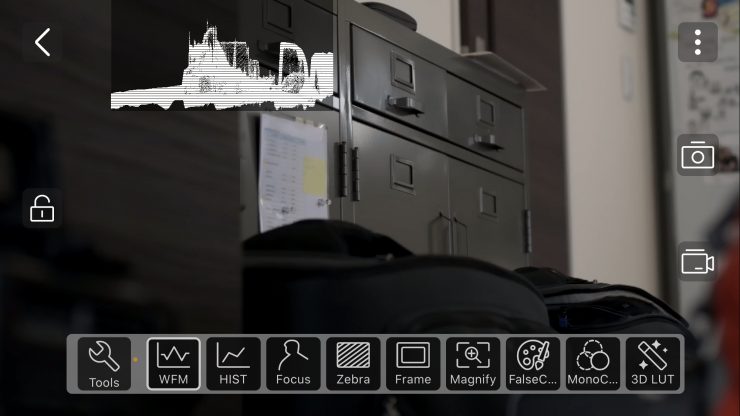
The app is pretty good and Hollyland has included quite a few useful video assist tools. Here is what you get:
- Waveform
- Histogram
- Focus peaking
- Zebras
- Frame Guides
- Image magnify
- Monochromatic
- 3D LUTs
Now, you can have multiple image assist tools going at the same time which is nice. If you long press on any of the touchscreen icons you open up another sublayer that allows you to make changes to that assist tool.
It is a little strange that there are only LUTs for Canon C-Log, C-Log 2, and Sony S-Log. You can delete these LUTs, but I couldn’t find any way of uploading LUTs to the device.
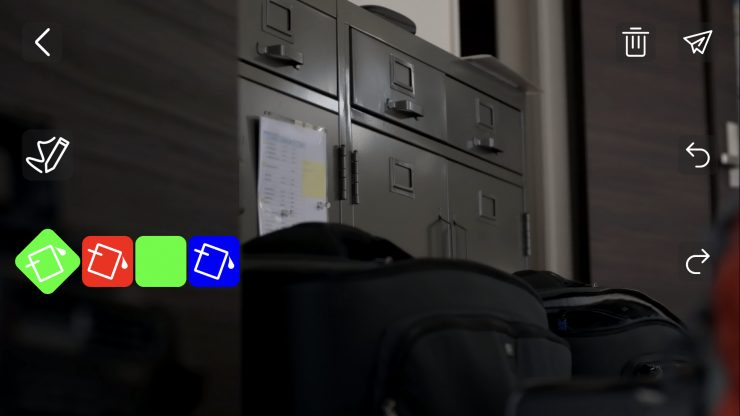
You can also take still images from the video footage and add notes. You also have the ability to record the video stream from the camera on the app itself. This is a nice little feature to have and it allows you to playback and have a look at a clip without needing to do it from the camera.
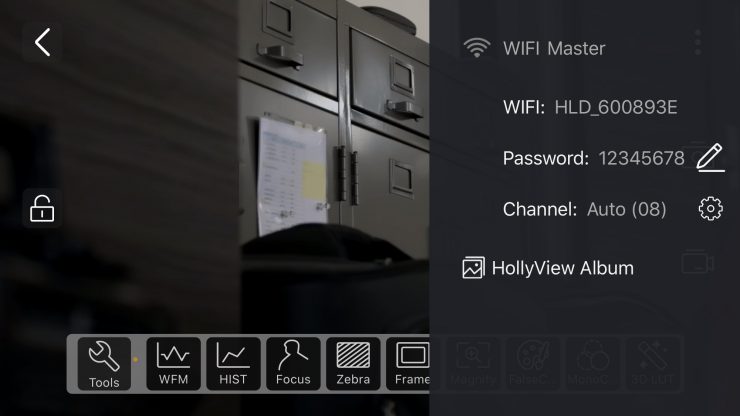
There is also a page where you can see information pertaining to the Wi-Fi network, the wi-fi password, and the operating channel. You can make changes to the password and channel on this page.
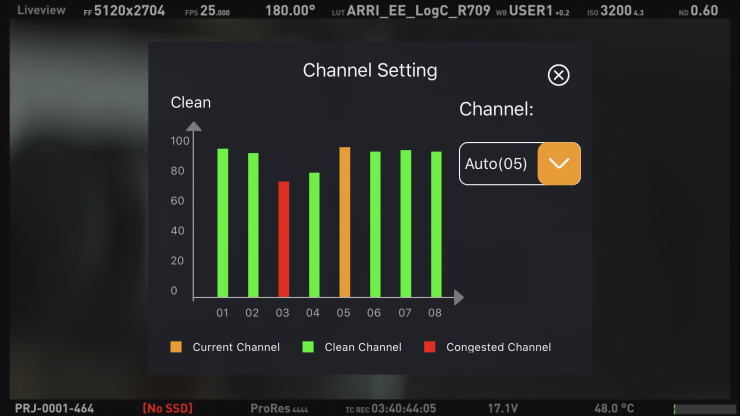
There are eight frequency channel options that can be switched to so you can avoid interference and ensure stable wireless transmission. There is also a channel scan feature that is in the HollyView App. It helps users to find out which channels are clean and which ones are with interference in sophisticated Wi-Fi surroundings.
The picture quality of the signal coming up on the app is ok. It will probably be good enough for most people who are buying an affordable system such as this. In saying that, the image does look a little jittery when it comes to movement. This is very common for app-based viewing.
Operating range & Latency
Hollyland claims that the Mars X has an effective operating range of 300ft (91.4m), but that is only if you have a clean line of sight. The more realistic operating range is just 150ft (45.7 m). This is a system that is designed to be used in close proximity to the camera. This is not a system you want to use if you need to send video over any sort of distance.
Hollyland claims that the latency is only 70ms and that the transmission delay is near zero. A synchronization feature ensures that your audio and video are delivered at the same time to your mobile devices.
Above you can see a short latency test I did using the Kinefinity MAVO LF as the camera. As you can see the latency is not too bad, especially for an HDMI based TX unit that is being viewed via Wi-Fi on an app. The bottom screen is the monitor on the camera and the top screen is the iPhone running the HollyView app.
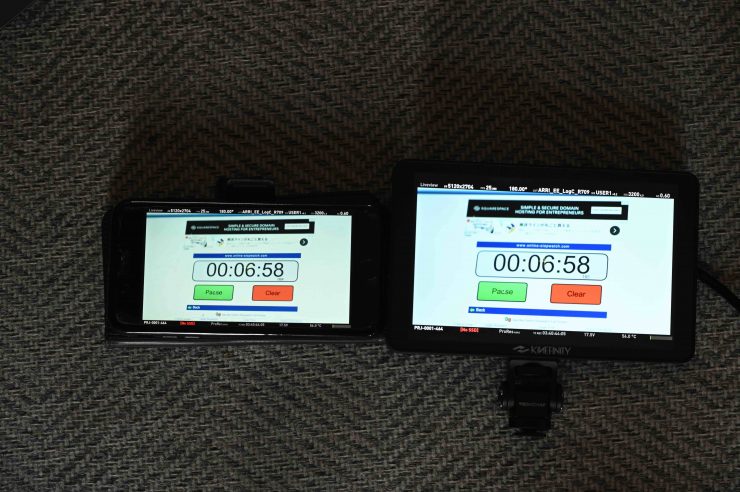
I also measured the latency delay average over a series of three tests at 77.33ms. These results were not bad for a budget wireless video system.
Now, there is a catch 22 and this is why you never do latency tests with just one camera because the results can vary dramatically. When I did the same test with a Panasonic S1H the average latency was 216ms
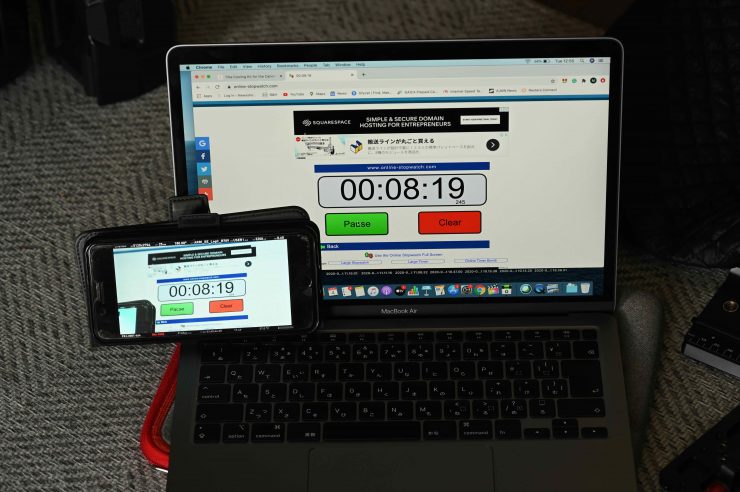
You also need to remember that there is always going to be a delay between what you are seeing displayed on your cameras monitor or EFV and what you are actually recording. Normally it is so small you would struggle to see it in the real world. Above you can see that the difference between the display showing the stopwatch in real-time and the image being shown on the HollyView app was 191ms.
What do these figures actually mean? Well, anything below 100ms is considered to be low, because most humans don’t perceive a delay that small. Once you get over 100ms we perceive a noticeable delay.
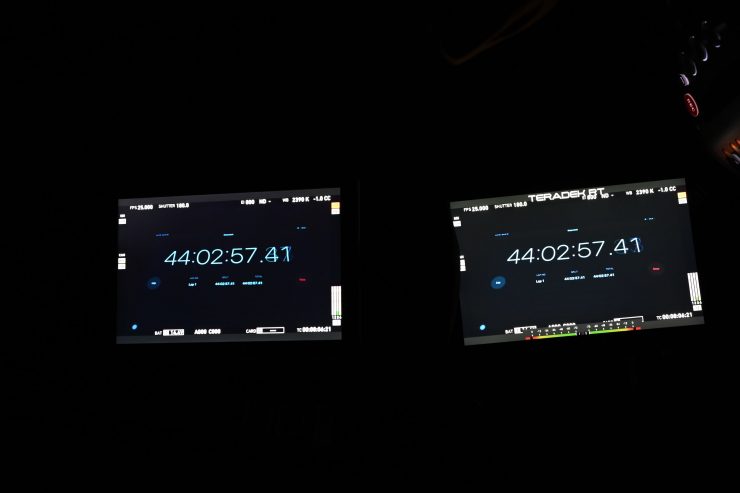
As a reference, above you can see that there is zero latency when using an expensive Teradek system (well, as close to zero as you can get. No wireless system is really zero in the scientific sense). This is a prime example of why you pay more money for a high-end wireless video system.
Look, HDMI has inherent image dealy problems, and yes if you combine that along with one of the cheaper wireless video systems you can get a lot of latency. But at the end of the day, there needs to be an acceptable limit that you are willing to tolerate. For watching via an app I can forgive the high latency, but if you are using dedicated TX and RX units it really needs to be below 100ms. When I say below 100ms, that is for ‘affordable’ budget systems. For high-end systems, it should be almost zero.
Delay on other app-based systems
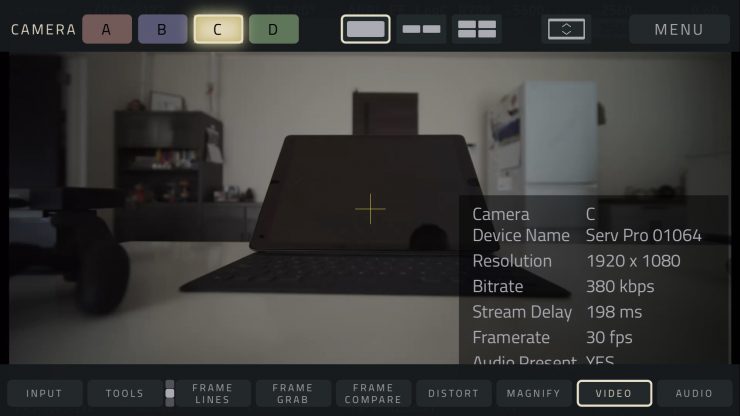
If we are just looking at the app-based latency, we need to look at how other wireless systems that can stream to an app perform. Even a device like the Teradek SERV Pro has a very noticeable delay. I did a quick test and found that I was seeing a latency delay of around 200ms. This same delay was there regardless of what camera I used or whether I was feeding an SDI or HDMI signal.
As a more realistic comparison, let’s look at the latency from the Accsoon CineEye Wireless Video Transmitter. The average latency when I did a test with the CineEye was 203ms. The latency on the Mars X was a lot less than competing systems.
Real-world performance
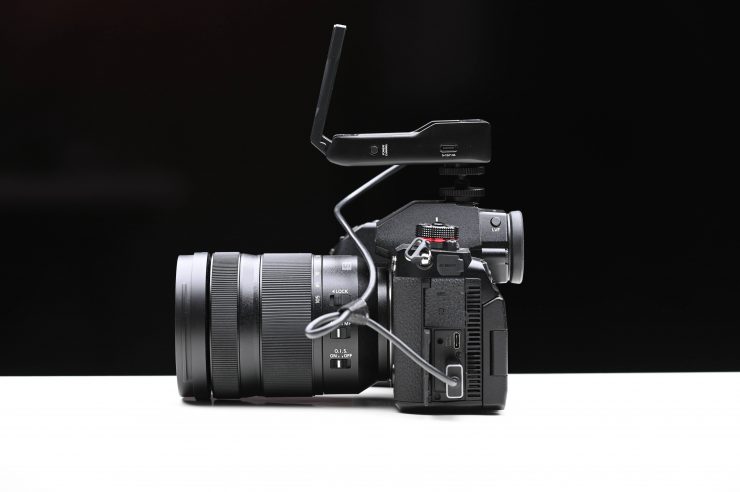
How does the Mars X actually perform in the real world? Well, let’s find out.
I wanted to test the range and performance of the system. To test the range of the system I remained in line of sight of the TX and started walking away with a tablet that was receiving the signal from the Mars X. I found that I could get 110 m (360.9′) and still have a stable signal.
Now, Hollyland claims a maximum operating range of 328′ (99.97m) line-of-site, but this is usually only going to be achievable on flat, open terrain where there is little wireless interference. I wasn’t expecting the Mars X to reach its claimed operating distance, but it actually it exceeded it by about 10m.
As a comparison, I did a distance test with the Accsoon CineEye system. I found I could get around 160m before the signal dropped out.
Whenever I review wireless video transmitters I do the test in the exact same place under the same operating conditions. This way I get a good idea of how various competing systems compare.
Price
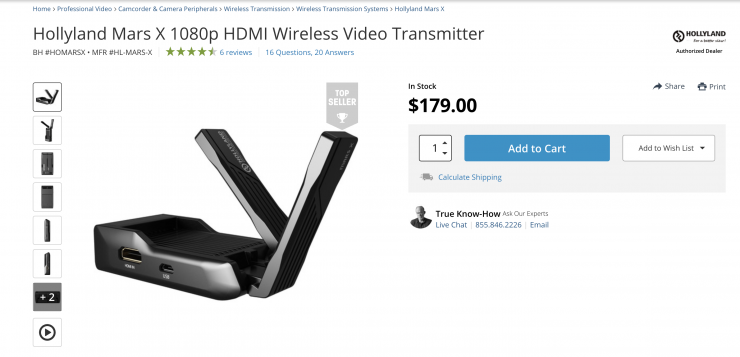
The Mars X retails for $179 USD.
How does this price compare to other wireless video systems that can stream to an app?
- Vaxis Atom 500 $480 USD
- Accsoon CineEye Wireless Video Transmitter $249 USD
- Teradek SERV Pro $1,619.10 USD
- Hollyland MARS 400S $649 USD
- Hollyland MARS 400 $539 USD
- Zhiyun Image Transmission Module Transmount Transmitter $169 USD
- Pilotfly EAGLEEYE – WIRELESS HDMI TRANSMITTER $149 USD
Please note all of the above systems offer different features and functionality.
Competition
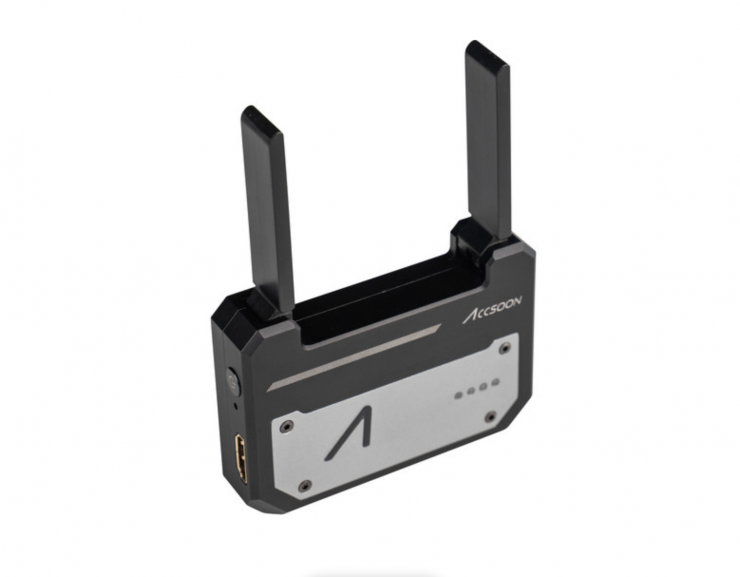
There are a few products that the Mars X should be directly compared to:
- Accsoon CineEye Air 5 GHz Wireless Video Transmitter for up to 2 Mobile Devices ($149 USD)
- Accsoon CineEye Wireless Video Transmitter with 5 GHz Wi-Fi for up to 4 Mobile Devices ($199 USD)
- PFY EagleEye Wi-Fi HDMI Transmitter ($169 USD)
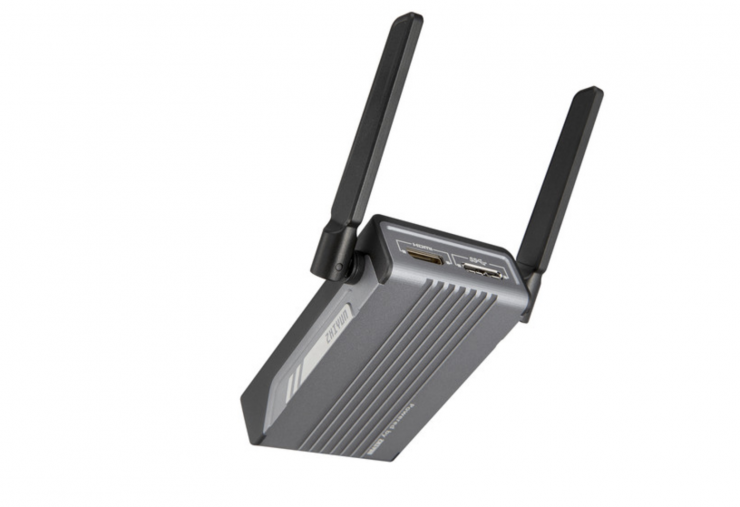
There is also the Zhiyun Image Transmission Module Transmount Transmitter for the Zhiyun Weebill S. Although this is designed for the Weebill S it can be used as a standalone wireless transmitter that can be viewed on iOS or Android devices.
Conclusion
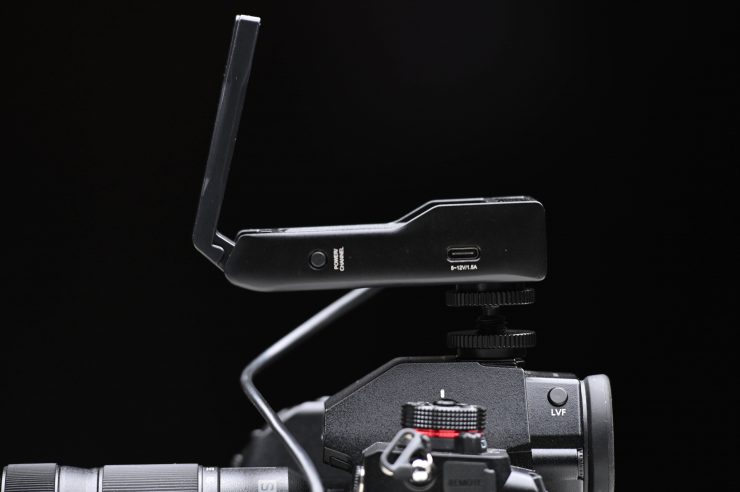
A wireless video transmission system needs to have rock-solid reliability. It also has to not get in your way and be easy to set up and use. Look, I get it, this is a budget wireless system, it is not supposed to perform like a dedicated professional wireless system. In saying that, it still needs to be reliable and easy to use.
The image delay is something you need to be aware of depending on the type of camera you are using. My tests showed that image latency can vary dramatically. With the Kinefinity MAVO LF the latency was pretty good for an affordable wireless system, but when used with the Panasonic S1H is was pretty bad. If you are watching the signal and are not near the camera and can’t see what is going on, then image latency isn’t necessarily a big deal.
You need to clearly know that this system is not going to provide you with latency-free images. The results you are going to get will depend greatly on the camera you are using.
In saying all of this, if you are talking about any app-based wireless streaming, they are all going to have quite a noticeable delay. If you think you can buy one of these types of systems that can stream to multiple smartphones or tablets at the same time, and you are expecting extremely low latency performance, you are dreaming. In saying that, the Mars X does give you latency that you can live with and it performed a lot better than other affordable wireless transmission systems in its class.
You don’t want to buy a product, regardless of how much it costs, or who it is aimed at, and then find out it doesn’t perform in the way you were expecting. I just want you to be aware of what you should expect and what the limitations are with Mars X.
Look, the quality of the stream isn’t that great that you see on the app, but it will be decent enough for a lot of people. I wouldn’t expect a great looking image on a sub $200 USD wireless system.
I like what Hollyland has done with the Mars X. It is reasonably reliable, easy to use, it has a nice app, and the latency is pretty good for an app-based monitoring system. The only real caveat with it is that 1-hour battery life, which basically forces you into powering the device through an external power source.
All in all, it is hard to fault a device that costs under $180 USD that is able to stream video with decent latency to multiple iOS or Android devices.
Like what we do and want to support Newsshooter? Consider becoming a Patreon supporter and help us to continue being the best source of news and reviews for professional tools for the independent filmmaker.

